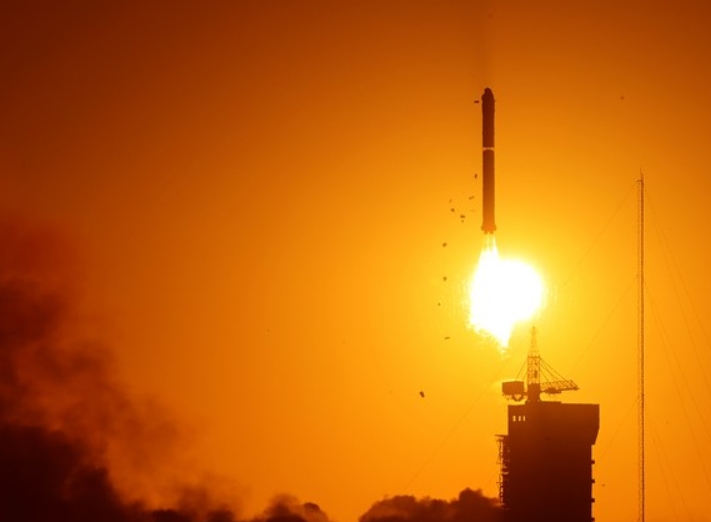Chinese satellite captures images of strong solar flare

A Long March-2D carrier rocket carrying the solar exploration satellite Advanced Space-based Solar Observatory (ASO-S), called Kuafu-1 in Chinese, blasts off from the Jiuquan Satellite Launch Center in northwest China, Oct. 9, 2022, furthering the country's scientific endeavor to unravel the secrets of the sun. (Photo by Wang Jiangbo/Xinhua)
China's solar exploration satellite Kuafu-1 has captured images of a strong solar flare emitted by the Sun on the first day of 2024, according to the Purple Mountain Observatory under the Chinese Academy of Sciences.
The solar flare, peaking at 5:55 a.m. Beijing Time on Monday, is classified as an X5.0 flare, the strongest in more than six years. Coronal mass ejections were also detected simultaneously by the satellite.
Solar flares are large explosions from the surface of the Sun that emit intense bursts of electromagnetic radiation, which can last mere minutes. They are rated based on their strength, with A-class as the smallest, followed by B, C, M and X as the most potent.
Flares and solar eruptions can impact high-frequency radio communications, electric power grids and navigation signals, and pose risks to spacecraft and astronauts.
Chen Anqin, chief forecaster of the National Center for Space Weather, said the impact of the solar flares on Earth would be minimal. However, other phenomena that accompany the flares, such as coronal mass ejections that reach Earth, can cause geomagnetic storms.
However, Chen said that X-class flares will become frequent occurrences in 2024.
Every 11 years, the Sun completes a solar cycle of calm and stormy activity and begins a new one. The current solar cycle, called Solar Cycle 25, began in December 2019. According to Chen, during each solar cycle, there are about 100 X-class solar flares, with nearly 20 X-class solar flares occurring in 2023 alone.
"Solar flares are expected to become more common in 2024 as the Sun rises to the peak of Solar Cycle 25, known as the solar maximum," Chen said.
The Kuafu-1 satellite was named after Kuafu, a giant in Chinese mythology who indefatigably chased the Sun. The satellite was launched aboard a Long March-2D rocket in 2022.
Editor:伏娅敏
